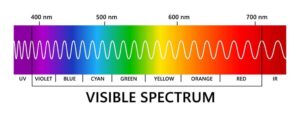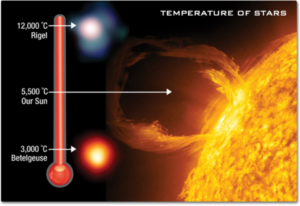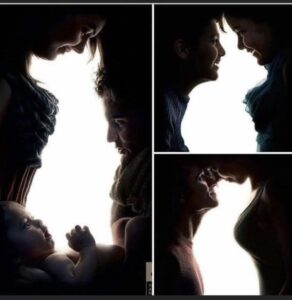There is an object nearby that catches your attention. You perceive its shape, size, movement, but also its color, contrasts or location in space. Did you know that we get more than 80% of the information about the world around us with our eyes? What is perception and how does it arise?
The emergence of sensation
Visual perception is nothing but a chemical reaction. With a pinch of imagination, it would look something like this:
light energy + absorption in the photoreceptors of the retina = electric potential concentrated by the nerve cells of the retina and transmitted to the visual center in the frontal lobe of the cerebral cortex via the visual pathway (the image is perceived = seen)
In translation, our eyes receive electromagnetic waves, but not just any, but only those that fall into the category of visible light (about 350-780 nm). This light stimulation is transformed by photoreceptors into signals that are transmitted by nerve pathways to the visual center of the cerebral cortex, where they are analyzed, which causes us to see.

Suppositories vs. sticks
The vision process consists of a whole series of chemical reactions – from the impact of a photon (a unit of light) to the creation of an excitation and its transmission. Perception is possible thanks to two types of receptors in our eye (rods and cones), the visual pigment rhodopsin and photochemical pigments. Rhodopsin is present in rods and photochemical pigments are activated by light in cones.
Sticks
- ensure vision even in low light intensity,
- do not distinguish colors,
- they make up the vast majority of photoactive cells – 130 million,
- are concentrated more in the peripheral parts of the retina,
- after light hits the retina, it is absorbed – thanks to their high sensitivity, the rods react to the impact of even a single photon.
Suppositories
- ensure vision under good lighting conditions,
- perceive colors,
- there are only 7 million of them,
- their greatest concentration is in the area of the yellow spot.
Color vision is conditioned by the presence of 3 types of cones that absorb wavelengths of light with different maxima:
- blue 440 nm,
- green 535 nm,
- red/yellow 565 nm.
The perception of other colors arises from the combination and intensity of irritation of these three types of suppositories.
Wavelengths of visible light
All electromagnetic radiation is light, but we can only see a small segment of this radiation – the part we call visible light. The rods and cones in our eyes act as receivers tuned to wavelengths in this narrow band of the spectrum. Other parts of the spectrum have wavelengths too long or too short for the biological capabilities of our perception. The dominant source of visible light waves received by our eyes is the sun.
We can see it in all its beauty when the entire spectrum of visible light passes through the prism. The wavelengths are then divided into the colors of the rainbow, since each color has a different wavelength. Violet has the shortest wavelength, around 380 nanometers, and red the longest – around 700 nanometers.
Color and temperature
When objects heat up, they emit energy dominated by shorter wavelengths, changing color before our eyes. The flame on the burner changes from reddish to bluish depending on the burning temperature, or for example the color of the stars tells scientists about their temperature.
Our Sun produces more yellow light than any other color because its surface temperature is 5500°C. If the surface of the Sun were cooler – say 3,000°C – it would appear reddish like the star Betelgeuse. If the Sun were hotter – say 12,000°C – it would appear blue like the star Rigel.

When and why we see even in the dark
The function of the retina changes during the transition from light to dark. Its sensitivity to light increases and the concentration of rhodopsin in the rods also increases. Perfect adaptation, however, takes up to 60 minutes, because sufficient vitamin A is essential for the process to start fully. When the intensity of lighting is suddenly reduced, vision is therefore reduced to impossible.
We can see, but the function of the cones is suppressed and we stop seeing colors. The maximum spectral sensitivity of the eye approaches a shorter wavelength up to the region around 505 nm (=maximum spectral sensitivity of rhodopsin). Colors of the short-wave spectrum (for example, blue) can be recognized even in the dark, thanks to the fact that they appear brighter in the dark than long-wave colors (for example, red). We call this condition the Purkinje phenomenon.
A stimulus
You must have noticed that what you focus your gaze on is illuminated, more clearly. However, at the same time, you also perceive the environment in which your object is located. It will never happen that we will be able to perceive both elements at the same time, but we can switch between them quickly.
Now a little test: What do you see in the picture? Did you notice the white part or the black part more? Have you realized that you are either looking at white or at black, and although you jump quickly, you cannot perceive both parts simultaneously?

This method of contrast is the most basic form of organization and perceptions. It is also popularly used for optical illusions. These are perceptions that, after processing, lead to conclusions that do not correspond to reality. This can happen when the distance or size of the stimulus is wrongly estimated.
Perception captures what affects the senses at that moment. It is a subjective reflection of objective reality in our consciousness, it informs about the external, but also about the internal world.



